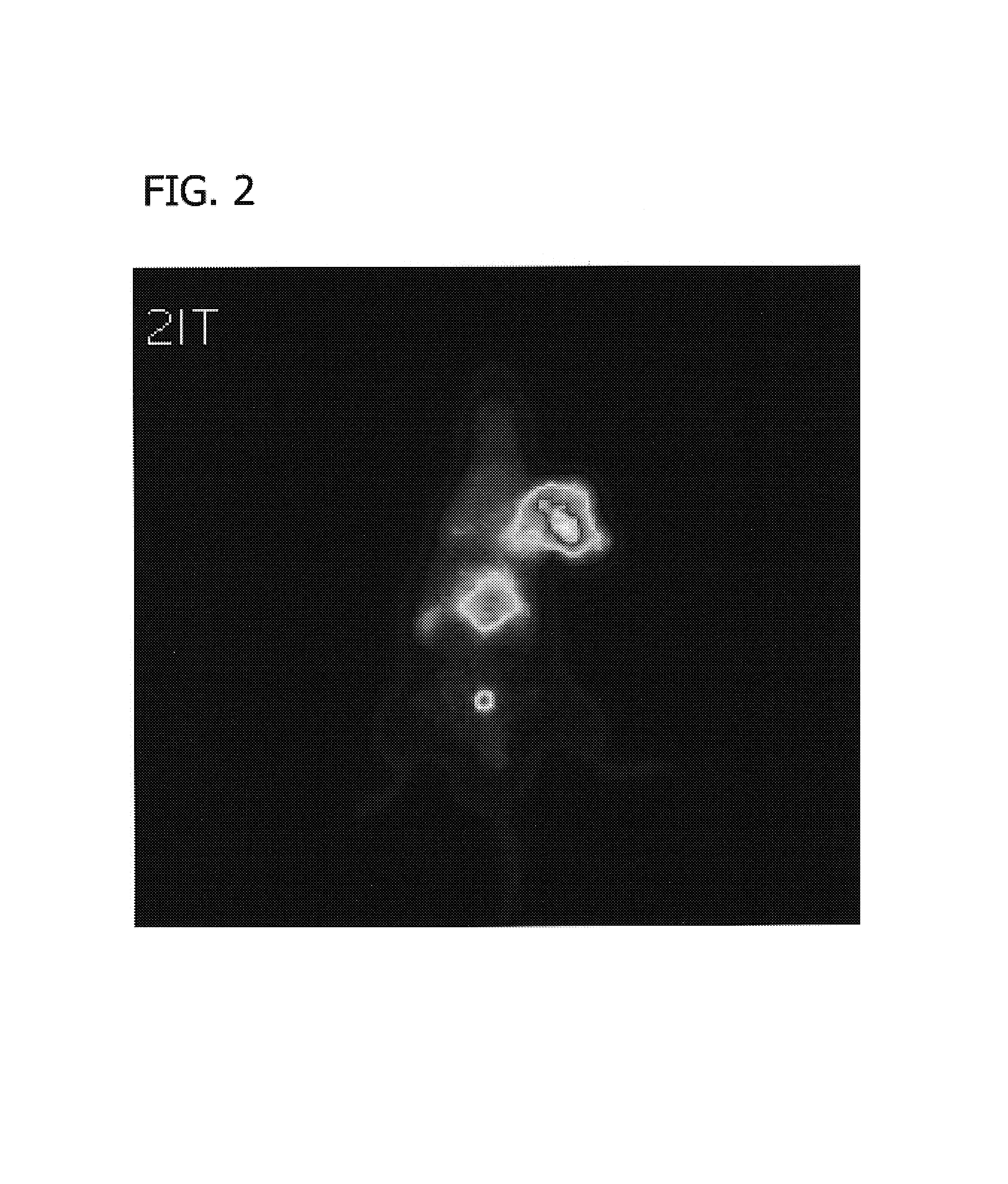Radioactively labelled amino acid analogues, their preparation and use
a technology of amino acids and radioactive labels, applied in the field of amino acid analogues, can solve the problems of limited sup>2/sup>-targets, far from being reached sup>18/sup>f-fdg production, and achieve the effect of easy and rapid synthesizing
- Summary
- Abstract
- Description
- Claims
- Application Information
AI Technical Summary
Benefits of technology
Problems solved by technology
Method used
Image
Examples
example 1
Synthesis of Precursor Molecules and Non-radioactive Fluorinated Analogues
1.1. Protected L-2-bromomethyl-PHE
[0045]On L-2-methyl-Phe the tributyl ester and N-Boc protection is introduced by conventional chemistry (N-Boc: (BOC)2O, TEA, MeOH / tButOH, room temperature, 2 hours; Butylester: TMSL+tButOH or Li—O-t-butyl, room temperature, 24 hours). The protected compound is reacted in CCl4 with Br-succinimide in the presence of benzoylperoxide as catalyst (radical halogenation) at 80° C. during 1 hour. After precipitation of the succinimide the product is purified by column chromatography.
[0046]As alternative for benzoylperoxide an irradiated polymer like PMMA is used as radical promotor, this allows the purification by simple filtration.
1.2. Protected L-2-Tosethyl-Phe
[0047]L-2-I-Phe is obtained by Cu1+ assisted iodo for bromo exchange on commercial available L-2-Br-Phe in acidic reducing aqueous condition (gentisic acid and SnSO4 as reducing agent for CuSO4). Protection is introduced as i...
example 2
Radiochemical Synthesis of Compounds of the Invention
[0056]L-D-18F-R-Phe analogues (R=methyl or ethyl) are prepared by nucleophilic exchange of 18F on L- / D-2-TosR-Phe in an AcN / TBA / HCO3− or AcN / K222 / CO32− mixture at 85° C. during 5 minutes.
[0057]In short, 18F− is separated from the target water via an anion exchange column. Elution of the activity is achieved with tetra-n-butyl ammonium hydrogen carbonate in H2O. H2O is discarded by azeotropic distillation after addition of acetonitrile. L-2-Tosethyl-N-trityl-phenylalanine tert. butylester in dry acetonitrile is added to the 18F− recipient and heated during 3–5 minutes at 85° C. After the reaction the solvent is evaporated by means of pre-heated N2.
[0058]Then, two pathways are possible. First, de-esterification and de-protection are preformed in solution followed by HPLC or mini-column purification. Alternatively, straightforward de-protection can be performed on a mini-column followed by HPLC or another type mini-column purificatio...
example 3
In Vitro Affinity for Cancer Cells
[0060]The affinity of L-2-F-methyl-phenylalanine for uptake by the L-transport system 1 (LAT1) in cancer cells (rat rhabdomyo-sarcoma cells) was determined by measuring the inhibition of the uptake of L-3H-phenylalanine after 15 minutes incubation in HEPES buffer of pH 7.4 containing appropriate amounts of L-phenylalanine and of L-2-F-methyl-phenylalanine. The uptake was saturable and followed the typical Michaelis-Menten relation allowing to draw Lineweaver-Burk (FIG. 1) plots.
[0061]The double reciprocal plots in FIG. 1 with a common intercept almost on the 1 / uptake axis shows that the inhibition is competitive with the phenylalanine uptake and uses the same LAT transporter system.
[0062]A mean Ki value of 76 μM was obtained for L-2-F-methyl-phenylalanine. This value is almost comparable with the Km value of 65 μM obtained for the natural L-phenylalanine in the same conditions.
PUM
 Login to View More
Login to View More Abstract
Description
Claims
Application Information
 Login to View More
Login to View More - R&D
- Intellectual Property
- Life Sciences
- Materials
- Tech Scout
- Unparalleled Data Quality
- Higher Quality Content
- 60% Fewer Hallucinations
Browse by: Latest US Patents, China's latest patents, Technical Efficacy Thesaurus, Application Domain, Technology Topic, Popular Technical Reports.
© 2025 PatSnap. All rights reserved.Legal|Privacy policy|Modern Slavery Act Transparency Statement|Sitemap|About US| Contact US: help@patsnap.com



